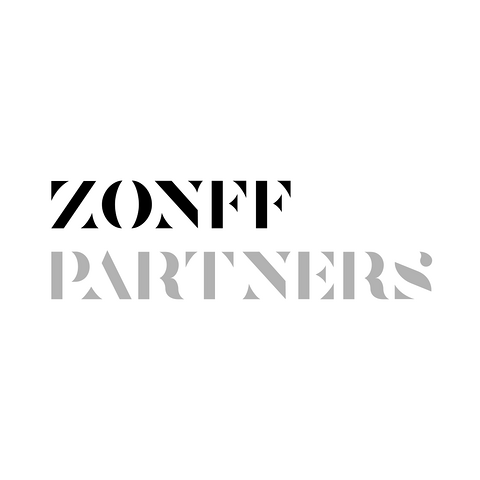Original source: Sullivan,Zonff Partners Investment Director, Twitter: @devicex_w
After communicating with some Web3 game developers, one feeling is that on the one hand, everyone has very optimistic expectations for the future of Web3 games, and on the other hand, there are big differences in its development direction and business logic. From the early P2E model to the traffic distribution platform, from the MMO model to the full-chain game, the focus of the market is always changing.
Although both belong to the category of "games", in fact, the business logic of stand-alone games is different from that of online games and mobile games, and the popular Web3 games Axie and Stepn have another set of logic. Therefore, it is difficult to copy Web2 games to Web3 simply by horizontally comparing game production experience and gameplay.
Here are ten problems we see in our discussions with game developers. We will also share possible answers and solutions.
Our key observations are:
More and more traditional game developers are beginning to enter the Web3 game, but some developers still need to improve their understanding of crypto native game culture;
Web3 games that do not pay attention to social attributes and the mobile market will encounter major bottlenecks in the long-term development;
Web3 games that do not pay attention to social attributes and the mobile market will encounter major bottlenecks in the long-term development;
There are two possible development directions for Web3 in-game economic model design. One is the integration of player participation in management design and centralized control of project parties, that is, market economy combined with planned economy; the other is a completely decentralized free market economic model, in which game content and logic are completely constructed by players;
The Ponzi model is a relatively neutral thing, and it is understandable that Web3 games should be used reasonably in the early stages to attract players. A good Ponzi standard is that the in-game asset inflation rate is consistent with the user growth rate;
Although the news media often report that the era of the "Metaverse" is coming, the actual development is far from it, and the real popularity of the "Metaverse" game scene will take at least 5-10 years to be seen;
Full-chain games may become the growth point of the next wave of Web3 games.
Full-chain games may become the growth point of the next wave of Web3 games.
Question 1: What are the huge highlights of Web3 games?
Historically, games and game publishing can be categorized as one of three business models (new business models are not necessarily replacements or improvements to old ones).
The first type of game is the hard copy. Game software is distributed on floppy disks, game packs, CDs, and DVDs, and after purchasing a hard copy, gamers will play the game until its conclusion. Today, platforms like Steam and Origin offer such games through digital copies that users can download.
The second type is free games. Players can download the game for free or play online, but there are also opportunities to pay, such as purchasing items. Glory of Kings and PlayerUnknown's Battlegrounds are among the best in this category, bringing in hundreds of millions of revenue to Tencent around the world every year.
The third is to let users make money. Lineage and many other MMORPG games fall into this category. This type will not be limited to games, but will generate many scenes that are integrated with the real world, such as professional game merchants.
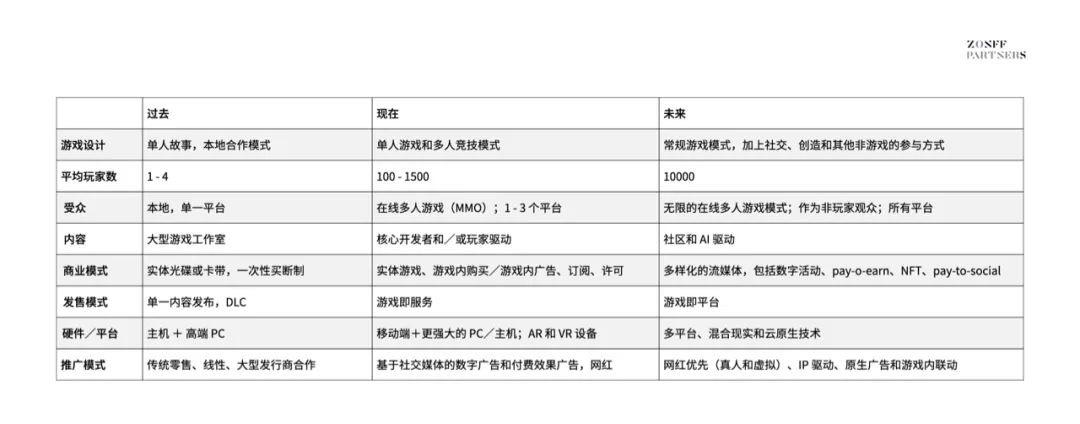
In the era of console games, the total sales of over 30 million copies is already the existence of top game products. In the era of online games, games with MAU exceeding 10 million can be found everywhere. An important reason is that in addition to the entertainment attributes of games, the Internet also incorporates social attributes into games. Many people who did not play games before began to download games such as King of Glory and PlayerUnknown's Battlegrounds due to the influence of friends. Playing games with friends has become an important way for young people to socialize.
Traditional online games are different from stand-alone games—social
For Web3 games, in addition to continuing the important social attributes of online games, the characteristics of the blockchain also turn the concept of ownership in the virtual economy into reality. Not only games, but the economic incentives generated by Crypto/NFT asset output, consumption, and exchange will attract a large number of players. Even though online games such as CSgo/Fantasy Westward Journey have legal currency transactions of off-site game equipment, the essence of the subject matter is still a string of reproducible codes. It was previously revealed that CSgo executives secretly changed the code to copy firearms to secretly sell them for profit, and NFT can prevent such things from happening. Just like the real estate registration system, on the surface, it adjusts the relationship between people and things, but in fact it adjusts the relationship between people. Web3 makes possible the adjustment of virtual asset/economic ownership.
Web3 games are different from stand-alone games - social + asset exchange
Borrowing the concept of Web1 and Web2, we think that the state of traditional online games is similar to Web1 – users prefer to read rather than write. Gamers can play League of Legends but cannot directly participate in the rule design of their characters and skills. They just passively consume the game content and logic developed by game developers. We call this paradigm 1.0, and blockchain will bring gaming 2.0. Enforce ownership on strongly immutable execution platforms whose computational capabilities scale with continued innovations in verifiable computation (proof systems, proof recursion and aggregation, Rollup layer architectures, hardware acceleration, etc.) and whose programming paradigms strive for infinite Licensing composability and interoperability. Many players can directly participate in the creation and development of core game systems without borders—not just cosmetic items, custom game modes, and maps, but also low-level character design, artificial intelligence systems, and physics systems—to be combined modularly (composability ) and have authoring across environments and ecosystems (interoperability).
Web 3 games are different from traditional online games—players participate in governance design
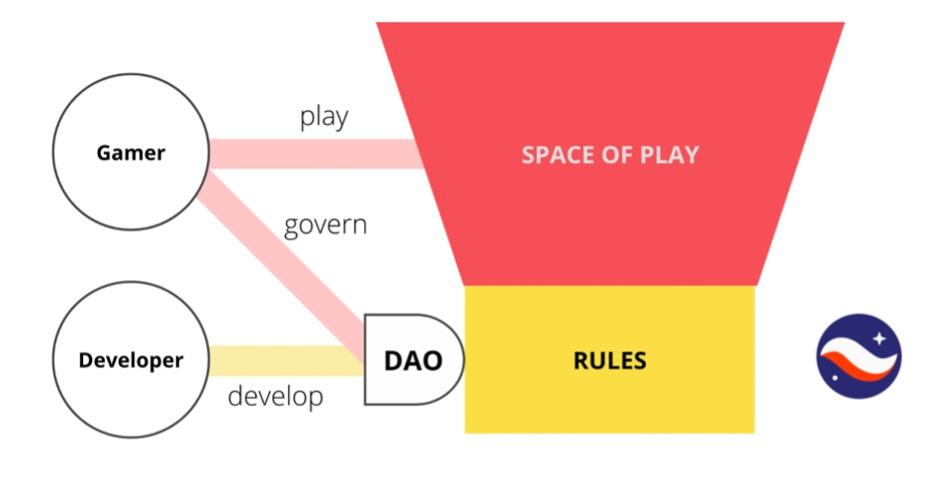
Image source: https://www.guiltygyoza.xyz/2022/08/game 2-in-schematics)
Question 2: How has the portrait of Web3 game practitioners changed?
It has been nearly two years since the GameFi bull market triggered by the explosion of Axie Infinity in the first half of 2021. An obvious feeling is that the portrait of entrepreneurs on this track has changed from a crypto native entrepreneur trying a game scene to a traditional game giant. Factory practitioners began to try to combine the crypto field. Although it seems that both are in the form of crypto plus game, the underlying logic is often different.
Web3 Game Development Timeline
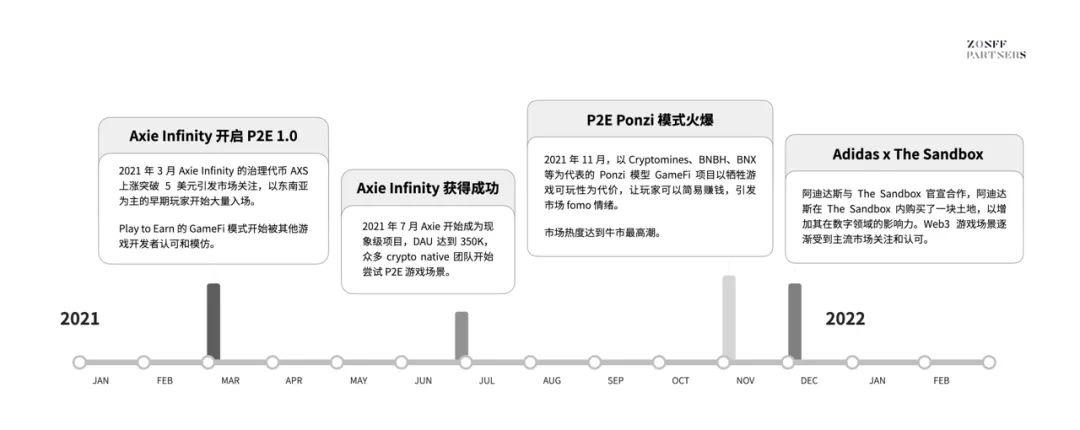
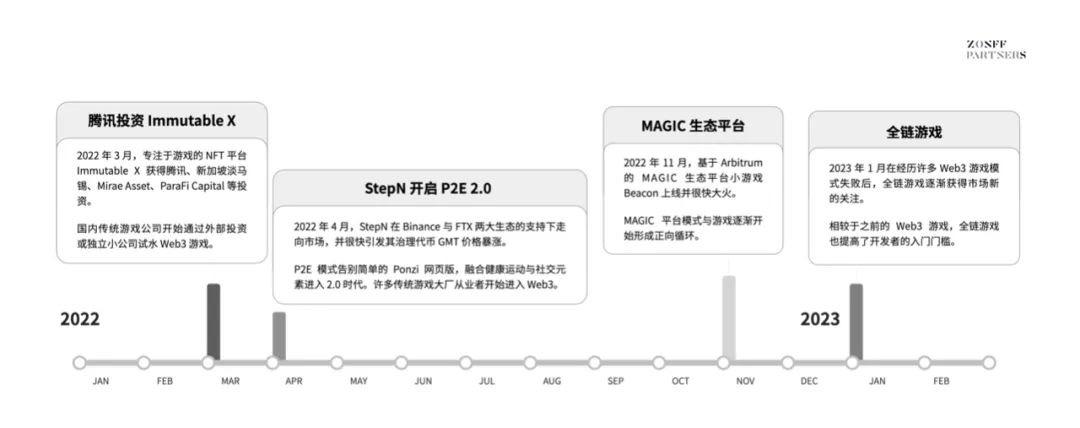
The projects made by the former crypto native entrepreneurs trying the game scene can be successful in the second half of 2021, which means that their team will see the market opportunity in the first half of 2021 at the latest and start to prepare funds to find the team to develop products. Even though many games at that time (such as Cryptomines/BNBH/BNX, etc.) were criticized by many people for their Ponzi economic model, and later considered by many players as not belonging to the game at all, the team’s own market judgment and execution ability are very strong. strong. These entrepreneurs are familiar with the basic logic of the blockchain industry, know how to play public chains, NFT, Tokenomics, DeFi, Twitter/Discord marketing, etc., and give up the "playability" of the game and turn to arbitrage with token price increases (short-term money making) as the main purpose.
As a practitioner in the game industry for many years, the latter is often more enthusiastic about the gameplay itself, and pays more attention to the "playability" of the game itself. In the long run, this is a very good starting point, but some developers blindly pursue the playability of the game and instead sneer at the Token/NFT/Crypto community and other cultures, thinking that as long as they make a good game and simply add Token/NFT and other elements to reduce dimensionality Those crypto native game entrepreneurs, we think this is wrong. Many traditional game practitioners should understand the rules of the Web3 game when trying the Web3 market, and should not completely deny the Web3 gameplay without understanding. Basic questions such as which public chain is needed, whether a market maker is needed, how to establish and maintain a project community, etc. should be considered and prepared in the early stage. As the mobile phone sales champion for 14 consecutive years, Nokia has many years of experience in mobile phone design, production and sales, but was defeated by Apple in the era of smart phones. Similarly, if traditional game practitioners insist too much on the original game development path dependence, experience may also become a stumbling block in the Web3 game field.
Question 3: Is it feasible for game manufacturers to leave Web3 and follow the model of traditional games + Tokenomics (chain reform)?
The "chain reform" of traditional Web2 games here refers to transforming traditional games into blockchain economies and combining elements such as Token/NFT to make them blockchain games.
Before answering the "chain reform" plan of traditional Web2 games, you can think about another question: Why does this Web2 game need to undergo "chain reform"? It is a pity that in the process of communicating with developers, it is often found that the original Web2 games are difficult to continue, and they turn to bite the bullet and carry out chain reforms, hoping to catch the hot spot of GameFi to gain investment and market attention. In other words, the relatively successful games made in Web2 do not have such a big demand for chain reform at the moment. Even if they are interested in trying the field of blockchain games, they will start a new and small-scale attempt instead of changing the original Web2 game that has advanced to half. Web3.
The gold nugget in this field can be explored is the Mir 4 (Legendary 4) of South Korea's Wemade Company. On August 26, 2021, Wemade launched the chain reform game Mir 4, which has been sought after by new and old players around the world as soon as it was launched. At one point, the number of people alive reached 6.23 million. Players can dig black iron to exchange Draco coins, and Draco coins can be converted into WEMIX Tokens that can be traded on the Exchange to sell for profit. Although this wave of operations has brought great benefits to the stock price of Wemade, the company behind it, for the game itself, it is still strongly resisted by many traditional gamers.
It is undeniable that, judging from the financial report released by the company, Mir 4 has indeed led to an increase in game revenue. The net income of Mir 4 in 4Q21 was KRW 424.7 billion, approximately USD 337 million. As a result, Wemade's business situation has improved significantly. However, Wemade's 2021 Q4 net income surge is largely due to the sale of Wemix tokens, and this income does not seem to be continuous at present. Because it can be seen from the subsequent Wemade 1 Q2 2 and 2 Q2 2 financial reports that the increase in the company's Web3 layout cost did not continue to bring about an increase in the company's revenue. Wemade's net income in the first quarter of 2022 was only 322 million won. Even in the second quarter financial report, Wemade's consolidated operating loss was 33.258 billion won, and its net income also entered a state of loss of 31.642 billion won.

Data source: https://www.wemade.com/IrEn/EarningsRelease
In the latest third-quarter financial report released on Wemade's official website, the company did not restrain the momentum of losses, and due to the loss of financial income, the company's net income loss reached 88.497 billion won.
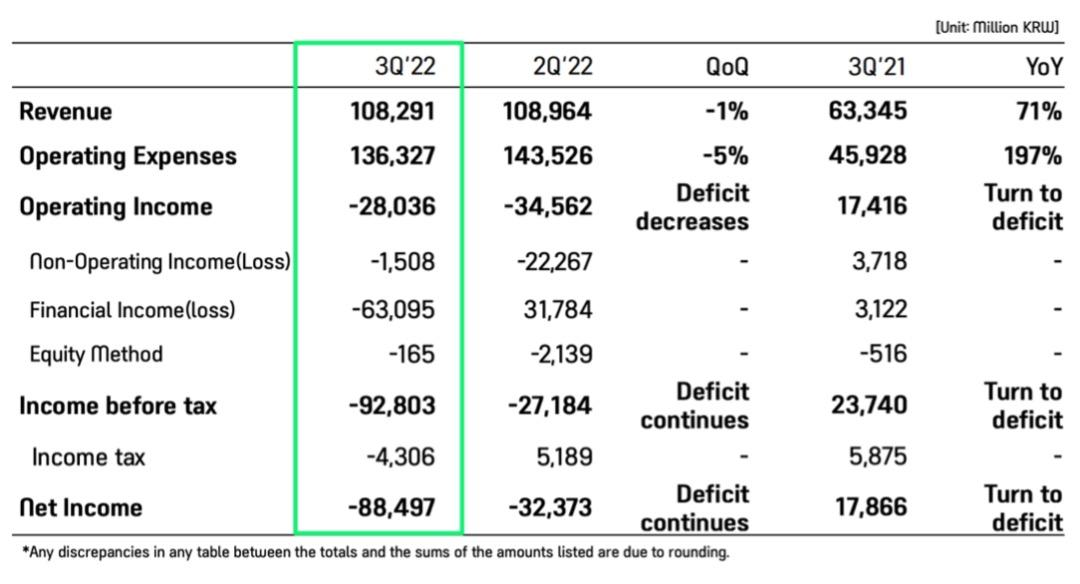
Data source: https://www.wemade.com/IrEn/EarningsRelease
It can also be seen from this that the market does not buy into the traditional game chain reform at this stage, the rough implantation of P2E elements and the NFT of props. Instead of changing from traditional games to blockchain games, games originally designed based on the ecological characteristics of Web3 and the carrying capacity of the public chain may have better adaptability in the crypto ecosystem.
Question 4: How far are we from the popularization of the "Metaverse" game scene?
With the upsurge of the metaverse concept, many domestic game companies have deployed related fields of the metaverse. In offline communication, many companies also frequently asked us, as practitioners, whether we are optimistic about the arrival of the "Metaverse" mentioned in some media, and whether there are many new business opportunities. Regarding this point, we are optimistic about the commercialization of "Metaverse" in the long run, but in the short term, we do not recommend that traditional industry companies enter the market rashly.
The current layout of the metaverse concept is mainly divided into four sections: underlying architecture (such as blockchain, NFT), back-end infrastructure (such as 5G, cloudification), and front-end equipment (such as AR/VR, wearable devices) , Scene content (such as game content). At present, about 40% of China's listed game companies have successively established metaverse business layouts in different fields, including representative game companies such as Tencent Games, NetEase Games, Century Huatong, and China Mobile Games. In addition to content layout, some companies have also invested significantly in the fields of XR, artificial intelligence, and cloudification. In addition to game companies, some companies also provide support for the development of China's game industry Metaverse on the technical side, such as Yuanjing and Unity, and promote the development of China Metaverse through in-depth cooperation with game companies.
Despite the enthusiasm, the metaverse news reported in the media is often quite different from the actual development of the industry, and the scenarios that may happen in the next 10 or 20 years are described as things that are coming in 3-5 years. Sandbox (SAND) and Decetraland (MANA), as the leaders of the Metaverse game concept, returned to calm after the popularity in 2021. For these two, the financial support and team staffing should exceed 95% of the teams on the market, but it has not become the Web3 Roblox or Minecraft we expected. The reason is because of the current underlying technology There is still a lot of room for improvement.
Of course, what the ultimate form of the metaverse is is not what we plan out now, but a result of continuous exploration and continuous evolution. To achieve this result, three difficulties need to be crossed:
Difficulty one, underlying computing power support. The metaverse game has a more open world, so its content is very large, and the requirements for computing power are very high. The so-called client-side division of labor in the game may not be able to meet the massive computing power requirements of the Yununiverse game. For example, during the massive Fortnite concert with Travis Scott, the event claimed 12.5 million spectators. However, these audiences are not in the same partition. They are actually scattered in countless virtual concert scenes, each partition accommodates about 50 audiences, and the audiences are not completely synchronized with each other. Although the current technical capabilities have been greatly improved compared to that time, there is still room for improvement in the face of hundreds of thousands or even millions of simultaneous online carrying capacity.
The second difficulty is cross-industry technology integration. Metaverse games not only involve gaming technology, but also the integration of multiple technologies in multiple industries such as digital twins, signal capture, artificial intelligence, and AR/VR. This will also lead to the problem of talent shortage in the future, especially the demand for compound and cross-industry talents will continue to grow.
The third difficulty is the construction of open ecology and virtual elements. Metaverse games will involve multiple industries and companies upstream and downstream, and will have an impact on diverse streaming media. And this also requires that various industries and companies can jointly build an open ecosystem and establish new standards and protocols for broad accessibility and interoperability. On the other hand, for supervision, it is also necessary to establish new governance rules for the metaverse ecology, including content review, intellectual property protection, privacy protection, financial management and other standards.
Looking at it, the company closest to the metaverse may not be Meta or Roblox, but Tencent, which has many years of social and gaming experience. At Tencent's annual game conference in 2021, Tencent's strategic layout related to the Metaverse occupies a more important position. Tencent interprets the overall layout as a "super digital scene", which is also the trend presented by the "early" Metaverse. These trends include blurring the lines between real and virtual worlds through expanded content, social interaction and increased offline activity. Although Tencent has innate advantages both in terms of ecology and technical level, Tencent has not made great strides towards the metaverse, but has proposed a "full reality interconnection" that is biased towards the industrial economy, so that virtual economic technology can serve more real industries. , worth looking forward to. In any case, judging from the current development progress, it will take at least 5 years or even longer to witness the popularity of the Metaverse.
Question 5: Are MMO games the next hot spot in the GameFi market?
The reason why many people in the market are optimistic about MMO games in the Web3 field is also obvious, because assets and transactions are the focus of this type of game, and the NFT/Tokenization of virtual assets for transactions naturally conforms to the attributes of Web3 and satisfies many encryption natives. Player needs.
But after seeing many MMO games on the market, one feeling is that it is actually very difficult to make a good MMO game. Many Ponzi GameFi games that will appear at the end of 2021 can be built and launched in a short period of three months with templates, and many P2E games in 2022 can be designed, developed and operated within 6 months. However, a good MMO game often requires a longer period of design and polishing, and constantly adjusts parameters during operation to achieve a dynamic balance in the game's economy, character props/attributes, etc. As outstanding predecessors in the MMO field, North America’s World of Warcraft, China’s Fantasy Westward Journey, and Japan’s Final Fantasy 14 have all been polished for more than 10 years, with multiple adjustments and iterations of economic models and gameplay in the middle to form a stable ecosystem and game crowd. It is relatively difficult for an entrepreneurial team to complete an MMO game within six months from scratch, and an excessively long cycle will increase the team's cost burden.
In addition, another phenomenon is that even for traditional MMO games, their proportion in the overall category of games is gradually declining. There are many ways to play in MMO, but there are often substitutes. For example, those who want to play PvP can directly play MOBA or FPS, and those who like to develop can directly play development games. The logic of MMO is that it is necessary to develop characters first, and then The large and comprehensive game design will make it difficult to subdivide the gameplay in depth.
Another good MMO game must enhance the interaction between players, and cannot be a stand-alone game played by players on the same server. That is to say, it is necessary to design a set of market mechanism. The character growth of the same player must rely on the output exchange of other players to continue. And this kind of market mechanism design will be much more difficult than direct PvP or casual games.
Therefore, compared to the MMO mode, I am more optimistic that the "small and refined" or "new and strange" game mode will become the growth point of the next wave of Web3 games, which remains to be seen.
Question 6: What is the possible development direction of Web3 in-game economic model design?
The decentralized nature of Web3 itself has the characteristics of a market economy, and it is also the reason why many Web3 native players oppose too much interference/regulation of the game economic system by game project parties (violating the original intention of decentralization). However, judging from the successful Web3 games Axie Infinity and StepN in the past, it seems that the project party's control of game centralization is indispensable. From this, we observe that there are two views on the internal economic design of Web3 games in the market.
Viewpoint 1: A good Web3 game, at least in the early stage, cannot let the complete market economy model leave the in-game economy/token model to the players/community to design and trade by themselves, but should adopt a model combining planned economy and market economy. That is to say, the project party should not only design and control the main economic cycle in the game to ensure the overall balance of the game, but also hand over part of the management authority to the players/community to enhance their sense of participation.
Fantasy Westward Journey is the combination of planning and the market. The output and consumption of fantasy coins are controlled by NetEase, but the best equipment/summoned beasts/treasures can be returned to the market for players to trade on their own.
Planned economy: During the character growth process of Fantasy Westward Journey, when it is necessary to increase the character's damage/defense training value, a large amount of fantasy coins will be spent, thus forming an economic cycle in which players earn fantasy coins by doing tasks, and spend fantasy coins to increase the character value . Designs similar to training systems abound in Fantasy Westward Journey. Therefore, NetEase strictly controls the output and consumption of fantasy coins, and it is relatively difficult for inflation to achieve economic system balance within the game.
Market economy: Equipment/summoned beasts/treasures/beast decisions can be traded by the players themselves after completing missions such as dungeons, and items can even be traded in fiat money in the treasure cabinet of the game.
For the early days of Web3 games, it is understandable for the project party to use some centralized control methods to maintain the stability of the game. The following are several recommended methods for the project party’s reference:
Controls the ratio of token release to new player admission rate. In order to avoid the increase in demand caused by the entry of a large number of new players in the short term, the project party can control the entry rate of new players through the invitation code. Thereby maintaining the stability of the game token price and the economic system as a whole.
Time tax and lock threshold. The project party can set a tax rate for withdrawing earnings based on the expectation of the player to obtain tokens, and the tax rate will gradually decrease over time. For example, if the obtained token is sold directly, a 20% income tax will be paid, and if it is sold after ten days, it will be 10%. In addition, the project party can also lock the token income obtained by the players, and set a fixed threshold before they can be withdrawn, so as to reduce the centralized selling pressure of the game token.
Set up DAO treasury. The project party can store part of the game token, market fees or transaction slippage and other agreement income in a fixed address, as a game treasury for players to decide how to use the assets in the DAO treasury according to the rules of procedure. Strengthen the player's sense of participation and identification with the game.
Establish a closed loop of currency circulation. Distinguish between governance tokens and game tokens with high consumption, because governance tokens are much more difficult to obtain than the latter, and governance tokens need to be consumed at critical stages. Establish a more diverse consumption and acquisition mechanism for game currency, so that the distributed game currency can have consumption scenarios in the game, such as introducing an upgrade system and improving the attributes of game characters to increase consumption scenarios.
Viewpoint 2: The in-game economic system and even the design output of items should be handed over to the players, that is, a purely decentralized market economic model. This model has been practiced in the Loot ecology in September 2021 and has attracted market attention. Different from traditional Web3 game projects, creators design and create NFTs and sell them to collectors, and Loot collectors will also participate in the construction of the game ecology. Although the subsequent performance of the Loot ecology was not good, Loot has become a topic of discussion again when full-chain games come into view in 2023. (Interestingly, the MAGIC platform ecology that will be on fire at the end of 2022 is also a project derived from Loot in 2021)
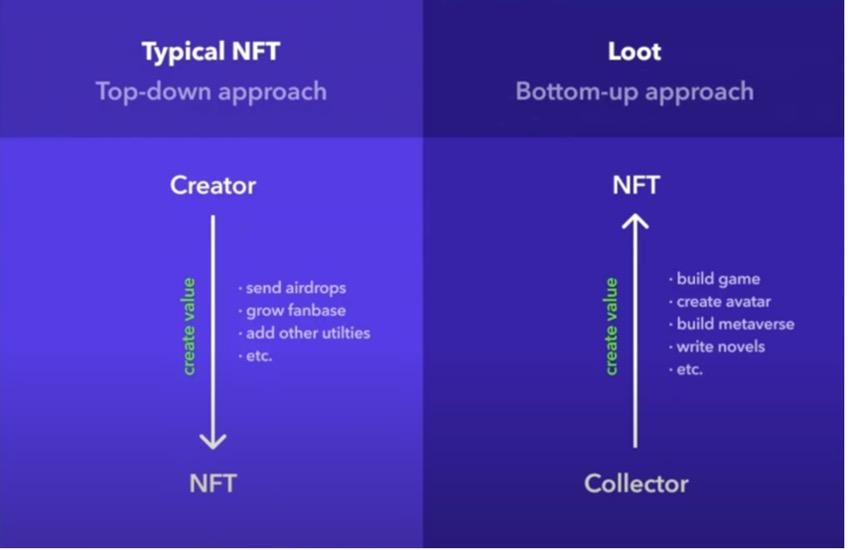
Image credit: Twitter: tandavas.eth @tandavas
In fact, pure market economy model games do not appear only with the emergence of blockchain games. In September 2021, "New World)" developed by Amazon after five years of research and development is based on this concept for operation. The merchant NPC is canceled and the user is allowed to produce and sell it by himself. Players must collect and produce all the materials they need. But unfortunately, the system quickly deflated, and players did not dare to spend money randomly, which made the prices of in-game commodities depreciate continuously, and the economic system was difficult to maintain.
Nevertheless, a decentralized in-game economic system will also have a larger narrative space. Games that rely on the centralized design and control of the project party are often simple in the early stage, but in the later stage, they will encounter many problems that affect the game balance. The project party's emphasis on control capabilities needs to be online in real time, which is a process from easy to difficult. And a purely decentralized market economic model game is difficult to start and run in the early stage, because many important game elements and systems rely on players to fill in and build. But when the internal economic cycle of the game is completed, the gradually formed positive flywheel will attract more players to settle in and participate in the construction, thus achieving a process from difficult to easy.
For the above two viewpoints, there are many Web3 games in the current market, and we can continue to pay attention to the project development and market response.
Question 7: Should the Ponzi economic model in GameFi be completely negated?
Although in the market, especially traditional game developers, there are many criticisms of GameFi's financial attributes, we understand that Ponzi is actually a relatively neutral thing, and it is understandable that it was used to start games in the early days to attract Web3 users. On the premise of controlling the ratio of new users/new capital entry and token release rate, maintaining the overall balance of the game economy and avoiding rapid rise and fall of token prices is also conducive to the long-term development of the project.
The gameplay of Web3 is important, but if we blindly downplay its asset transaction attributes and weaken the importance of Token/NFT price fluctuations, what are its advantages compared with traditional online games? Just as many excellent projects in the process of DeFi development used high APR to attract LPs for liquidity mining in the early stage, Web3 games can also use financial methods to attract early users under reasonable control.
But on the other hand, Ponzi here is not a reckless model of raising yields to attract new funds. A good Ponzi standard is that the asset inflation rate is consistent with the user growth rate. When the asset inflation rate is higher than the user growth rate, a death spiral will appear, and if the user growth rate is higher than the asset inflation rate, it will cause a sharp rise in currency prices and affect the stability of the in-game economic system.
Inflation rate = (current price level - base price level) / base price level
The above formula is the consumption index conversion method, in which the base period is to select the price level at a certain moment as a reference, so that the price level of other periods can be compared with the base period level to obtain the inflation rate.
User growth rate = (number of current players - number of players in the base period) / number of players in the base period
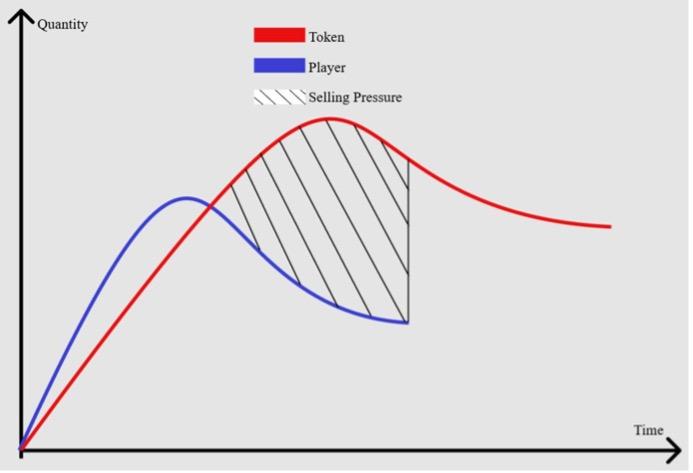
Note: If the token supply is not controlled, there will be a large amount of selling pressure in the shaded part of the figure
The slope of the token red line in the figure above represents the inflation rate, and the slope of the player blue line represents the user growth rate. The project party can pay attention to the changes in the number of players, focus on the dynamic adjustment during the surge of players, and control the growth rate of players and the money supply. Excessive currency issuance is not advisable. As the number of players increases, the currency supply should slow down. It is recommended to implement a fixed allocation system for the total amount of game coins, and the official formulate the total amount of tokens issued daily or monthly, and then carry out macro-control according to the proportion, control the inflation rate, and keep the growth rate of token supply and the growth rate of users Dynamic balancing thus prolonging the life of the game. Because once the number of new players cannot keep up with the money supply, it will quickly lead to currency depreciation and nowhere to spend, which will trigger a vicious cycle of accelerated exit.
Question 8: What should Web3 game traffic and distribution platforms pay attention to?
Game publishing is a very clear business model in the traditional game industry, with a high degree of consensus. As a hot entrepreneurial direction in the Web3 game track, many platform projects have achieved good financing results. We have asked some entrepreneurs of Web3 game platforms why they chose this direction, because the failure rate of a single game application product is high, and the platform serves as a traffic portal, and they can continue to cooperate to launch new game applications in the future. The success of the game will also bring The platform has huge traffic.
At present, there are three main modes of traffic and distribution platforms that can be seen on the market:
Lightweight game distribution platform - such as MAGIC (TreasureDAO) ecological platform. This type of platform will build a variety of small game ecosystems, so that platform tokens can be circulated and used among various small games. The Beacon game, which became popular in November 2022, has brought huge traffic to the Magic ecological platform in a short period of time, and it has also aroused people's expectations for other Magic follow-up game products.
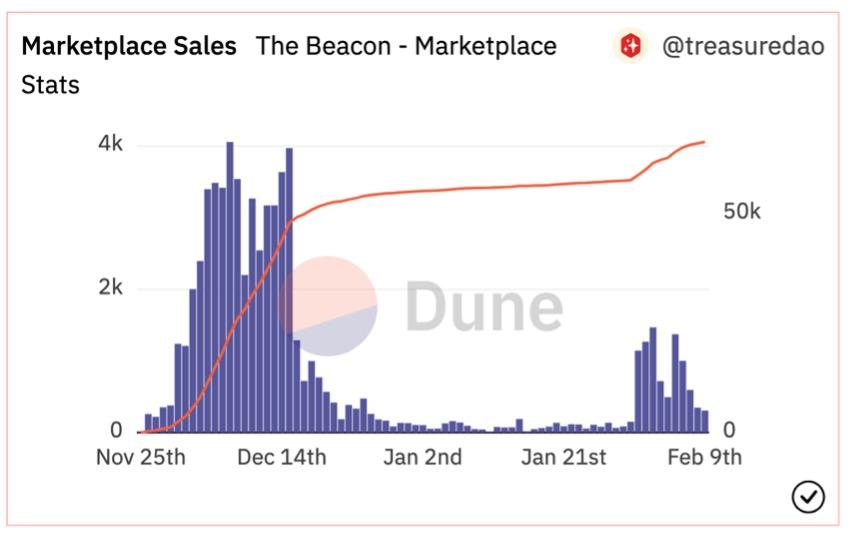
Data source: https://dune.com/treasuredao/the-beacon
The development difficulty and cost of lightweight games are low, and the compatibility with the blockchain will be better. Good lightweight games can also bring huge traffic. Magic timely combined Arbitrum as the underlying public chain, reducing technical problems such as high gas fees and delays faced by many Web3 games. This is also worthy of reference for many other platforms.
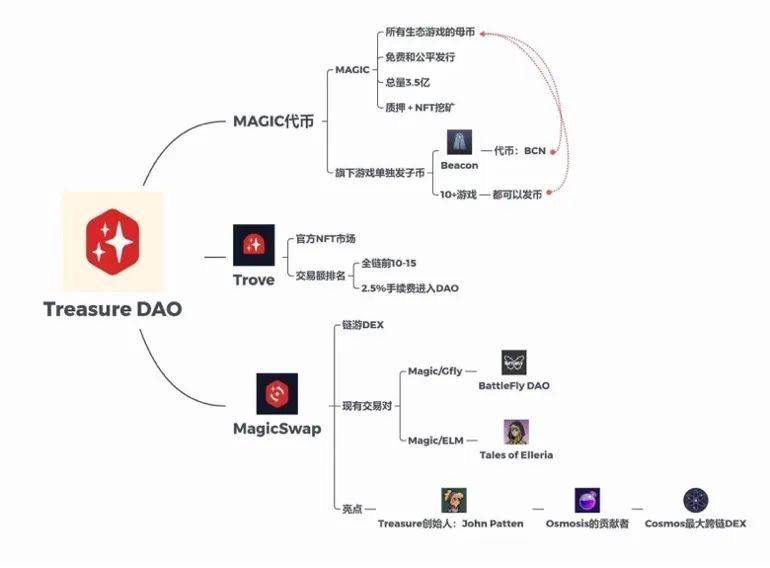
However, there are still many small games on such platforms with a very low proportion of originality, most of which are copying traditional Web2 games and then hyping assets on the chain or buying traffic. It is not denied that this model will have good traffic performance in the short term, but purely relying on copying and low originality often result in low product moats and long-term popularity is difficult to maintain. In addition, I have encountered some developers who want to use Web3 small games to go overseas to earn advertising fees and subsidize token prices, but this direction may be difficult to achieve. Because if this model is feasible, you can directly earn fiat currency advertising revenue on the traditional game overseas track, without detouring Web3. The advertising subsidy model currently sees a product that is made is Pi Network, but it is another set of gameplay rather than a game.
Strong niche publishing platforms - such as the Gala Games platform. As the first leading Web3 platform product to become popular, Gala occupies a very good ecological niche. Many high-quality game CPs are looking forward to cooperating with Gala, which is an advantage that many other platforms do not have. However, it is a pity that many high-quality games in Gala Games are still under development. At present, there is only one game open to players, Spider Tanks, and we look forward to the subsequent excellent products landing.
Guild distribution platform - such as YGG/GUILD guild platform. With the rise of Axie Infinity at the earliest, many Web3 game guilds have also been brought up. Different from the former two, guilds often gather many Web3 players, and tend to be closer to the trend of the game community and market preferences. For developers, it is also easier for the guild to give more timely and real game feedback, so that it can quickly adjust the direction to deal with changes. In terms of game cold start, the guild platform can also give more support.
In the current Web3 game market, we can feel that there are many game platforms, but there are not many good Web3 game products. Of course, if the platform itself has self-development capabilities or high-quality CP resources, and can continuously launch high-quality game products, this problem may be much better. In addition, after a Web3 game becomes popular, it is very likely that it will derive upstream and downstream ecological products instead of just looking for a third-party platform for cooperation. In this way, it will squeeze the living space of other platform products. This is why the moats of Tencent and Nintendo will be stronger than many other game developers. These issues are worthy of continuous attention by traffic and distribution platform developers.
Question 9: Is triple-A game feasible in Web3 at present?
The definition of 3A games has always been vague. It is generally considered to refer to games with high cost, high R&D time, and high volume. There may be differences in the classification of specific games. But it can be seen that the development of 3A games in the traditional Web2 game market has entered a relatively difficult stage.
On February 10, 2021, Ubisoft CFO Frederick Duguet stated that Ubisoft will no longer focus on AAA games in the future. CD Projekt RED (CDPR) has been preparing for several years for the 3-A game masterpiece "Cyberpunk 2077". After its release in December 2020, its reputation and sales have been declining because the quality has not met the expectations of players.
To be fair, the framework scene setting of "Cyberpunk 2077" is grand, and it is not inferior to the recognized high-quality open world games "Zelda Breath of the Wild", "Red Dead Redemption 2" and "The Elder Scrolls 5". And the real reason why the works are released halfway before they are fully formed is the long production cycle and cost of 3A. Cyberpunk 2077 will launch at $60, the same price as the much cheaper Pokémon Diamond Remake. After the release, the sales volume of "Cyberpunk 2077" was only 13 million copies, with sales of about 780 million US dollars. Excluding retailers, publishers, and platform fees, developers get 260-300 million US dollars in revenue. CDPR has officially stated that its 2077 development team has more than 400 people. Based on the average annual salary of foreign game developers of 150,000 US dollars, the salary alone will cost 60 million US dollars a year. If 2077 is completed and released before it is released, it is likely that the developer will not make ends meet.

"Cyberpunk 2077" game screen

"Pokémon Diamond Remake" game screen
This is true for CDPR, let alone a small game development company. That's the problem with triple-A games. The high development costs and long lead times make the company a gamble. However, the 3A games in Web3 games often have more publicity than reality. Star Altas, the Web3 game masterpiece that promoted 3A in 2021, finally released several exciting demo videos and the product finally disappeared. Illuvium and Bigtime are relatively well-developed among these products, especially after the recent release of Illuvium’s open world beta version, people still have expectations for 3A blockchain games. But on the other hand, the current 3A chain games are basically only PC-side, and it will cost a lot to synchronize the mobile side. But giving up the mobile terminal is tantamount to giving up at least half of the market at present, and these issues are worthy of attention.
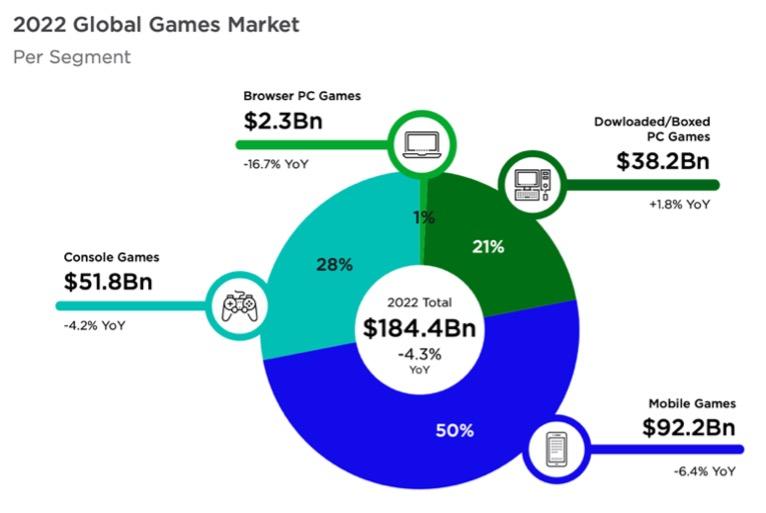
Data source: Newzoo Global Games Market Report 2022
The development and production of 3A games is suitable for strong game companies or entrepreneurial teams. In fact, it is no longer a suitable track for a small entrepreneurial team to try. We believe that in 25 years there will be 1-2 3A-level Web3 games, which is not only considered from the perspective of the supply side, but also the market's expectation for a 3A-level Web3 game.
On the other hand, an indie game can be just as good (or better) than a AAA game, and a big marketing and production budget doesn't necessarily translate to quality and player popularity. The small company behind the most successful indie game of all time, Minecraft, sold a profitable 54 million copies before the game was sold to Microsoft for an astounding $2.5 billion. Therefore, for most entrepreneurial teams, it may be better to cut into Web3 in the direction of "small and refined" than "big and comprehensive".
Question 10: What might be the market breakthrough point for the next round of Web3 games?
To quote a sentence from the StepN team at Solana Hackerson 2021: "A good Game-Fi project must first be a good game, followed by an application that runs smoothly, and then a meaningful token economics". There have been different speculations about the growth point of Web3 games in the future, from early P2E, MMO to distribution platforms, but currently we believe that the next round of game track may be full-chain games.
Fully On-chain Game
Unlike many previous Web3 games that only put assets on the chain, the logic of the whole chain game is 100% stored on the chain in the form of smart contracts, which is the real autonomous world on the chain - Onchain Autonomous World. However, due to the calculation speed and cost of the existing public chain, the development speed of the full chain game has been slow, and with the development of OP/ZK Rollup technology, the improvement of Layer 2 ecology will improve this problem. Recalling that we looked at NFT in 2018 and DeFi in 2019, perhaps the truly popular Web3 games in the future are different from any game category on the traditional game track, and full-chain games may fill this part of the gap.
As mentioned earlier, existing games are similar to the Internet era of Web1, and the process of players participating in the game is more inclined to read than write. The characteristics of the blockchain can incorporate more composability and interoperability into the game. A large number of players can directly participate in the creation and development of the core game system without borders, bringing the game into the 2.0 era of player co-creation. In the past, many Web2 games still relied on traditional game design concepts and logic, and full-chain games may open up new paths.
Represented by Dark Forest, Opcraft, Curio, and Topology can all be attributed to this track. Although the NFT price of the Loot ecology that was on fire in September 2021 has dropped a lot, it still gives the market a high level of narrative imagination. Although the above-mentioned full-chain games are not very playable, as the gas fee gradually decreases in the process of technological development, the complexity of the content that can be carried on the chain will gradually increase. Vitalik proposed in 2019 that finance and games would be the first two scenarios where the blockchain will be implemented. With the popularity of DeFi and NFT, full-chain games may also become the next development direction of the market.
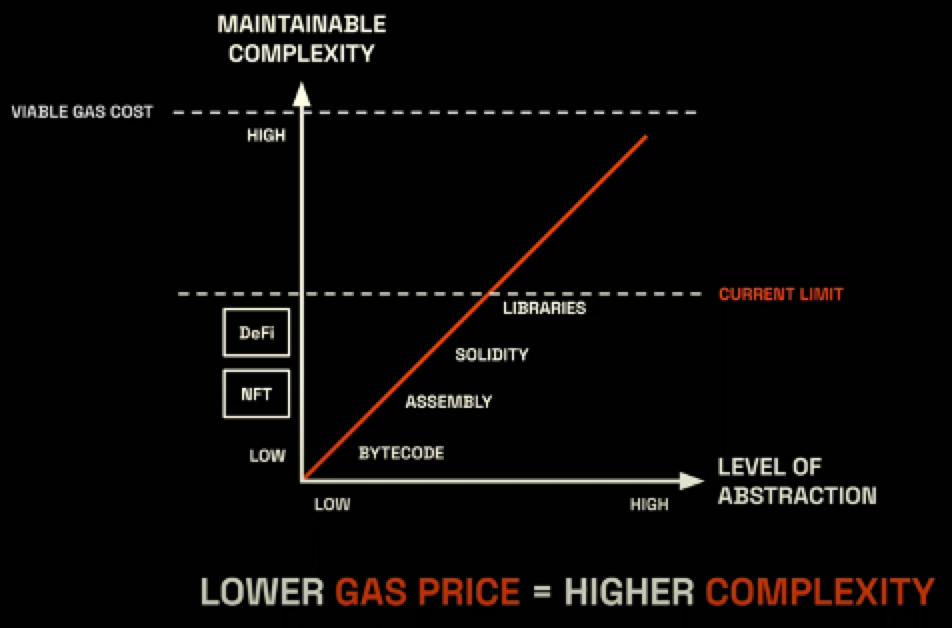
Data source https://www.youtube.com/watch? v=XhMCsvoCkQQ&list=PLNK 7 oFq 6 eaEwzgXeL 6 omjG 06 q 6 TpP 8 _Jd&index= 4
Finally, the video of the public demo demonstration of various full-chain games at the London event in 2022 is attached to "Read the original text" for reference.
Video: Autonomous Worlds Residency: Demo Day (Winter 2022)
Note: The projects mentioned in the article do not constitute any investment advice. The article only represents the current opinion of the author, not Zonff Partners. The information and opinions published in the article may no longer be accurate due to changes in the situation or other factors after the publication date.


